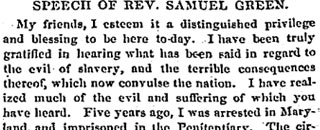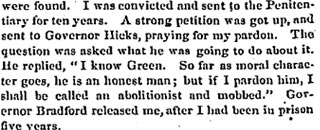Frequently Asked Questions



Liberator (1831-1865); Aug 15, 1862; 32, 33; American Periodicals pg. 130

Q: Was Maryland a slave state?
A: Yes. Officially, from 1664 to November 1, 1864 and the passage of the Maryland Constitution, race based slavery was legal.
Q: Did Harriet Tubman conduct 19 rescues in which she freed 300 people from slavery?
A. Research still continues, but evidence indicates that Harriet Tubman conducted 8 - 13 rescues which directly freed approximately 70 or more persons.
Q: Where were Harriet Tubman’s rescues?
A.
All of Harriet Tubman’s rescues were conducted in Maryland.
Q: Were white people enslaved in Maryland?
A.
White, Black and Indigenous people were all subject to indentured servitude in Maryland from the time of the initial arrival of the Ark and the Dove. Only persons of African descent, however, were ever legally condemned to slavery.
Q: Was slavery in Maryland less harsh than in other parts of America?
A.
Slavery in Maryland could be as brutal as in any other region of the Americas. Treatment was subject to the whims of the owner.
Q: Was it illegal in Maryland for enslaved people to read and write?
A.
There was no legislation which specifically prohibited enslaved people to read and write; it was, however, strongly discouraged. Famously, Samuel Green was arrested for “knowingly having in his possession a certain abolition pamphlet called, ‘Uncle Tom’s Cabin,’'' not for having the ability to read the book. After its discovery, Frederick Douglass’ owner’s wife was forbidden by her husband to continue teaching the enslaved child to read and write. Douglass had already retained enough knowledge to spark his interest and eventually became renowned for his literary and oratorical skills.
Q: Was interracial marriage considered illegal in Maryland?
A.
Marriage and the bearing of mixed race children was illegal and incurred serious punishments, until the law was repealed in 1967.
Q: Was Cotton the main crop sold everywhere slavery existed?
A.
Tobacco, not cotton, was the main crop sold in Maryland. In the early years of settlement, tobacco was virtually a source of commerce and a barter in exchange for services and penalties for crimes were assessed in pounds.
Q: Were all enslaved people freed with the passage of the Emancipation Proclamation?
A: Legalized slavery in Maryland did not end until the passage of the 1864 Maryland Constitution which took effect on November 1, 1864. All enslaved African Americans were not free until that date.
